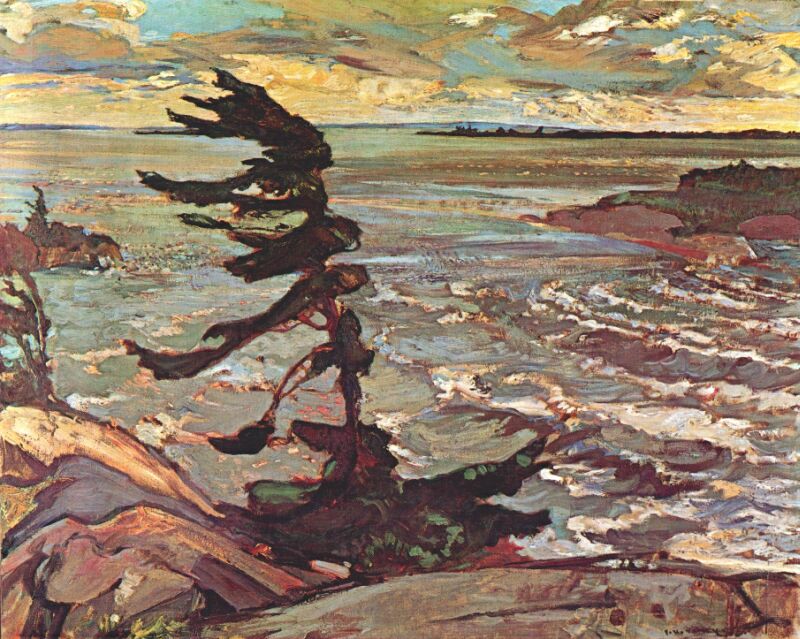A group of artists who exchanged the most wonderful John Marin-like "bows" with landscapes in the early part of the 20th century was Canada's Group of Seven. Every time I see any of their work, I am captivated all over again, because I find in these paintings a directness, an elegant truthfulness and such a celebration of Canada's natural scenery. The Seven are Lawren Harris, A.Y. Jackson, Franklin Carmichael, Francis Johnson, J.E.H. MacDonald, Frederick Varley and Arthur Lismer. Others who were associated with them but not officially of the Seven were Tom Thomson and Emily Carr.
F.H. Varley, Stormy Weather, Georgian Bay, 1921
All of them began to go out into the Canadian provinces and explore the wilderness at a time, in the very early 1900s, when artists had considered that Canadian landscapes were in essence unpaintable. Yet, they started to travel and paint, encouraging each other to do more. By 1920, they were ready to exhibit their first collective body of work under the label of the Group of Seven, and show the world just how wonderful the dialogue between artist and landscape could be in the dramatic landscapes of Canada.
In the Northland, Tom Thomson (Image courtesy of The Montreal Museum of Fine Arts)
When you see collections of these landscape artists' work, at The National Gallery of Canada and the Vancouver Art Gallery (where there is currently a special exhibition of their work entitled "Dawn"), every landscape artist will find delight and inspiration. Many of their oil sketches are the typical small format plein air boards. A big display of these at the National Gallery is like a breath of fresh air in their directness and sensitive use of colour and form. If anyone ever doubted the importance of working plein air, time spent studying these studies/sketches would soon banish those reservations. The later, larger-format paintings are more considered and highly finished, more studied in composition and thus they lose a fraction of that headlong breathless excitement of the plein air work. But that is really cavilling... they are still wonderful, in my opinion. It is nonetheless very interesting to be able to compare outdoor sketch and finished studio painting.
Lawren Harris: Maligne Lake, Jasper Park, Oil on canvas. (Collection of the National Gallery of Canada).
These early 20th century painters embraced and understood the landscapes in which they worked - it shows. They sing easily - at least apparently - of their sense of place, and we share their celebration of the seasons and grandeur of Canadian landscapes, both intimate and majestic.


